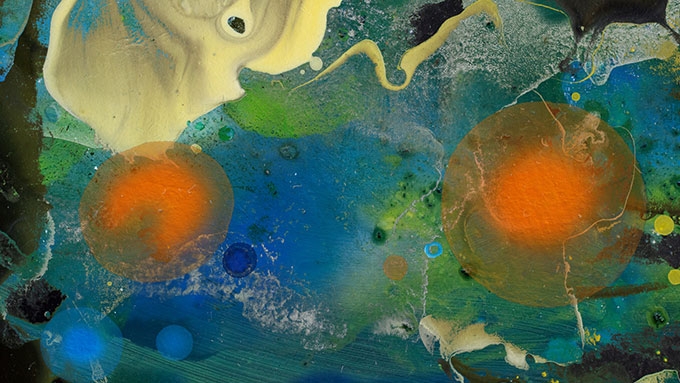A New Lens: Contemporary Video and Animation
–
Since the invention of motion pictures in the late 19th century, the moving image has shaped viewers’ perception of the world around them. Film and video artists manipulate the relationship between image and time to help us imagine a world that is different from the one we see through our own eyes. They provide us with a new lens through which to understand our present and consider our futures.
This exhibition celebrates innovative recent video and animation works by artists who harness their imaginations to push the boundaries of time-based media. A New Lens aims to ignite the viewer’s imagination as well, and to promote an embodied, reflective, and participatory viewing experience.
Many of us in 2021 encounter video every day as we consume digital entertainment, work, or socialize. As video has become more integrated into our lives, its form has shifted from the 4:3 square image of a bulky TV to the sleeker widescreen rectangle. Now, we’ve come to accept that same rectangle flipped on its side as we record and review the world through our phones. Though its dimensions shift, the square has contained and limited the aesthetics of video for decades. A growing number of contemporary video artists are breaking this mold, creating immersive video works by changing the scale, quantity, or shapes of screens.
Many of the works in this exhibition, all produced in the last decade, break free from the square frame, requiring the viewer to move in a circular motion to fully experience the impact of the image. The artists ask us to imagine different possibilities for the medium of video and think, quite literally, outside the box. Sue de Beer’s Praxinoscope at the center of the gallery is a cylindrical sculptural that references the animation device invented in 1877 by Charles-Emile Reynaud, one of the first tools for producing a moving image. This early technology is mirrored in form by Sue Austin’s immersive work at the cutting edge of tech, Creating the Spectacle, which was filmed in 360 degrees underwater and is projected at Middlebury onto a hemispherical screen.

Sue Austin, Creating the Spectacle, 2012, digital video, 7 minutes. Courtesy of the artist.
The artists featured in A New Lens not only visualize new modes for thinking about video, but explore the theme of imagination as a mode for thinking about the self. Shikeith’s documentary #Blackmendream, also displayed at Middlebury in the round, speaks to the power of dreaming through interviews with men from diverse backgrounds who discuss the complexities of defying stereotypes of Black masculinity. The Shadowlight Artists, a group of Oxfordshire-based artists, picture themselves in an animated world in their film Landscapes, a joyful product of collective imagination. The hand-painted animation of Landscapes is echoed in Jacco Olivier’s Rabbit Hole, a mesmerizing work viewed from above which prompts the viewer to visualize their own body falling through the gallery floor into an imagined space. William Kentridge creatively combines digital photography and painted animation in his stop-motion video Tango for Page Turning, in which he depicts the fracturing of self-identity alongside the fragmentation of time.

Jacco Olivier, Rabbit Hole, 2011, digital video, 3 minutes 10 seconds. Coiurtesy of Marianne Boesky Gallery.
Collectively, the works in this exhibition prompt an embodied reflection on what could be…by asking us to expand our visions for ourselves, our world, and the potential of video as an artistic medium.
A New Lens was curated by 2019–2021 Sabarsky Graduate Fellow Sarah Briggs ’14.5 in collaboration with the artists and Exhibition Designer Ken Pohlman. The exhibition was made possible by the New Media Arts Consortium, and loans from the Boesky Gallery, The Shadowlight Artists, Shikeith, and Sue Austin. Immersive projection was made possible by the MK360 projector by BroomX Technologies, supplied by One Voice Institute Inc. The installation at Middlebury was supported with funds from the Christian A. Johnson Memorial Foundation.
